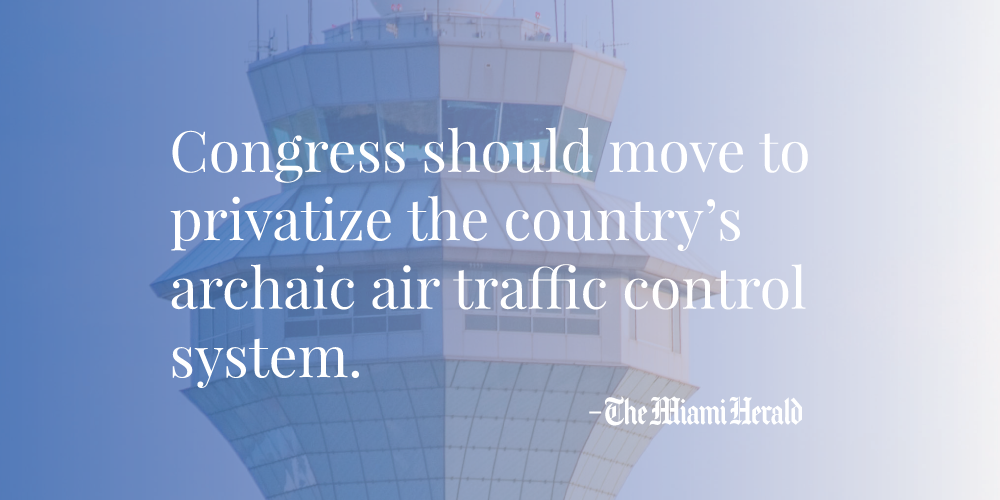Press Releases
ICYMI: Modernize Our Air Traffic Control SystemThe United States has the busiest airspace in the world. But instead of maintaining an aviation management system compatible with its standing, the nation relies on outdated technology long since discarded by the rest of world — under the control of a government bureaucracy rather than an independent entity. Those two facts are not unrelated. Congress controls the purse strings of air traffic management through the Federal Aviation Administration, but its cumbersome budgeting and funding process has failed to keep up with modern advances in aircraft tracking and communications. At the current pace, it will take U.S. aviation more than 10 years to catch up with the technology used today by other advanced nations.
Modernize our air traffic control system But instead of maintaining an aviation management system compatible with its standing, the nation relies on outdated technology long since discarded by the rest of world — under the control of a government bureaucracy rather than an independent entity. Those two facts are not unrelated. Congress controls the purse strings of air traffic management through the Federal Aviation Administration, but its cumbersome budgeting and funding process has failed to keep up with modern advances in aircraft tracking and communications. At the current pace, it will take U.S. aviation more than 10 years to catch up with the technology used today by other advanced nations. Essentially, the FAA relies on a 1960s-era patchwork system of ground-based radars and stations to follow aircraft movements, instead of using a space-based Global Positioning System (GPS) of satellites that has become the de facto international standard for air traffic control. The current U.S. airline tracking and navigation system cannot take advantage of the same technology we use in our cars. The drawbacks are numerous. For one thing, the current arrangement forces airplanes to fly in a zig-zag pattern from one control location to the next, instead of an efficient point-to-point route. It also takes time to update a plane’s position, because controllers have to rely on so-called echo transponders to pinpoint the location at any given time, instead of obtaining a reliable, precise and instantaneous readout from GPS satellites. Reforming the system requires an entirely new approach to air traffic control that takes it out of the hands of Congress. The approach adopted by more than than 60 other countries over the past two decades — including Canada, Australia, the United Kingdom, Germany, Italy, Switzerland, Spain — creates an independent, non-profit corporation to manage and fund the system. It has worked so well that the International Civil Aviation Organization, the U.N. agency that guides aviation standards, has urged all nations to adopt it.
The United States so far has remained a holdout, but a plan to implement the change is under serious consideration by Congress. It has the support of the Trump administration — as well as the labor union representing the nation’s 13,000-plus controllers. The blueprint would establish a private, non-profit corporation run by a 13-member “professional board” to manage and fund the system. It would include most of the FAA workforce, but the FAA would retain safety and enforcement powers. Any reform of the air traffic control system must protect airports in smaller communities and should also protect the interests of pilots and fliers who use private planes and small jets, who fear they could wind up paying much more. The need for an overhaul, however, far outweighs the objections. Reform would shift the funding system from Congress (and taxpayers) to user payments by airlines, allowing the corporation to issue long-term revenue bonds so that it could adopt the GPS-based platform to control tracking and navigation of aircraft, as most other major countries do. The plan deserves public support. Lawmakers have been debating modernization for years, while other countries have moved well ahead of us. It’s time for Congress to get on board. For more information on the 21st Century Act please visit our website, here. |








